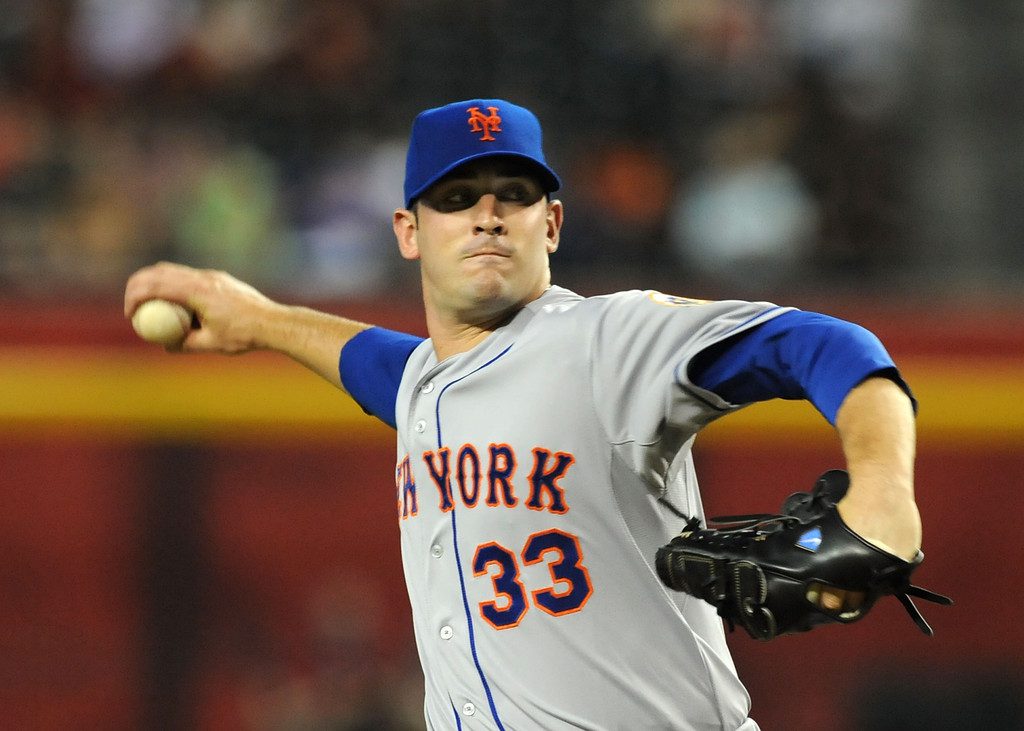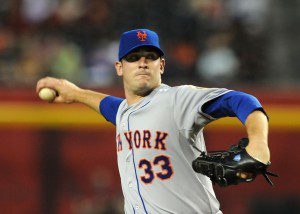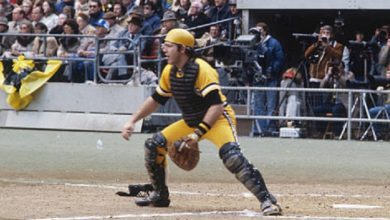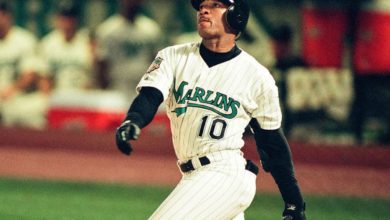

Last fall, New York Mets pitcher Jonathan Niese declared to anyone listening “He’s going to be great. He’s going to be great for this organization and its future. To be honest, his stuff is comparable to (Washington Nationals righty Stephen) Strasburg’s stuff.” A teammate of Matt Harvey would be expected to manifest such bold salutations. However, Niese wasn’t just blowing smoke.
As Aaron Gleeman points out, Harvey’s brief stint of 59 innings pitched in 2012 was exclusive despite the small sample size. The 23-year-old Harvey averaged 10.6 strikeouts per nine innings pitched (SO/9). For comparison’s sake, Harvey’s SO/9 was greater than Sandy Koufax‘s SO/9 (10.2) when Koufax was Harvey’s age.
More times than not, small sample sizes can be deceiving. At 23-years-old, righty Bobby Witt posted a 10.1 SO/9 in 1987 for the Texas Rangers. Over the course of the 12 next seasons (332 starts), Witt would only post a SO/9 of 6.79.
For example, a 6.70 SO/9 would have ranked Witt 61st among all starting pitchers in 2012. Ervin Santana, Chris Capuano and James McDonald all finished with a SO/9 rate higher than 6.70.
Most of the hysteria flanking Matt Harvey is expected though. He entered 2012 as the number-two pitching prospect in the Mets organization behind renowned righty Zack Wheeler. On the other hand, Harvey was only ranked 54th among all prospects according to Baseball America. Preceding Harvey in those rankings were the likes of Drew Pomeranz, Martin Perez, Jacob Turner, Mike Montgomery and Trevor Bauer. Needless to say, it appears prospect rankings are an inexact science.
Matt Harvey boasts a dandy three-pitch repertoire consisting of a high-velocity fastball, an unreal slider and a commendable curveball. He has also taken a step forward in the development of his change-up. Mastering his control will only enhance his deftness on the mound.
To qualify as a rookie, a player must not have exceeded 130 at-bats or 50 innings pitched in the majors. Also, that player must not have been on an MLB roster for more than 45 days during the 25-player limit period, excluding time on the disabled list. As evidenced by his innings pitched in 2013, Harvey doesn’t qualify as a rookie in 2013.
Suggesting a pitcher is the next best thing since the last best thing is not a new phenomenon. But Matt Harvey’s first start of the 2013 season lived up to expectations.
In seven innings pitched versus the San Diego Padres, Harvey allowed just one hit and two walks while fanning 10 batters. A pitcher who blanks the Padres in seven IP isn’t likely to draw headlines in every national newspaper. However, it’s not asinine to suggest this could be business as usual for Harvey as the season trudges along.
If Harvey can maintain a SO/9 rate above 9.0, he would earn his membership among the elite. Last season, only 11 qualifying starting pitchers maintained such a rate. Among them were Clayton Kershaw, Justin Verlander and Yu Darvish. If anything, Harvey’s first start of 2013 is a reminder that he has the ability to maintain such a high whiff rate.
Comparatively speaking, Matt Harvey’s walks allowed per nine innings pitched rate (BB/9) of 3.94 was high but not excessive. Among the 11 starting pitchers who maintained a 9.0o SO/9 rate or better, two finished with higher BB/9 than Harvey (Tim Lincecum and Darvish). Three others finished with a BB/9 rate of 3.00 or greater (Gio Gonzalez, Lance Lynn and Yovani Gallardo). At Harvey’s age and experience, a higher than average BB/9 rate is expected. Trimming his BB/9 rate down from where it was last season will also bode well for his leap towards being elite.
If Harvey only pitched 49 innings a year ago, he would have been MLB’s top prospect for 2013. Instead, Harvey fell into the grey area of not being mentioned alongside Dylan Bundy and Shelby Miller, while being overshadowed by Matt Moore and Darvish.
Suggesting Matt Harvey is on the cusp of greatness is not a pipe dream either. His numbers and metrics are better than or comparable to those of Felix Hernandez, Cole Hamels and Kershaw when they were at the same service time as Harvey. Commodity-wise, Harvey is not expected to be a flash in the pan. Scouts see Harvey possessing the upside of an elite ace.
Mets fans have something to look forward to. Fans of the other ball clubs in the National League East do not. Harvey turned 24-years-old a week ago and it appears he is destined for greatness. So long as he continues to stroll onto the mound and monopolize on his unique set of skills, Matt Harvey will be a fixture among baseball’s elite for the next decade.





